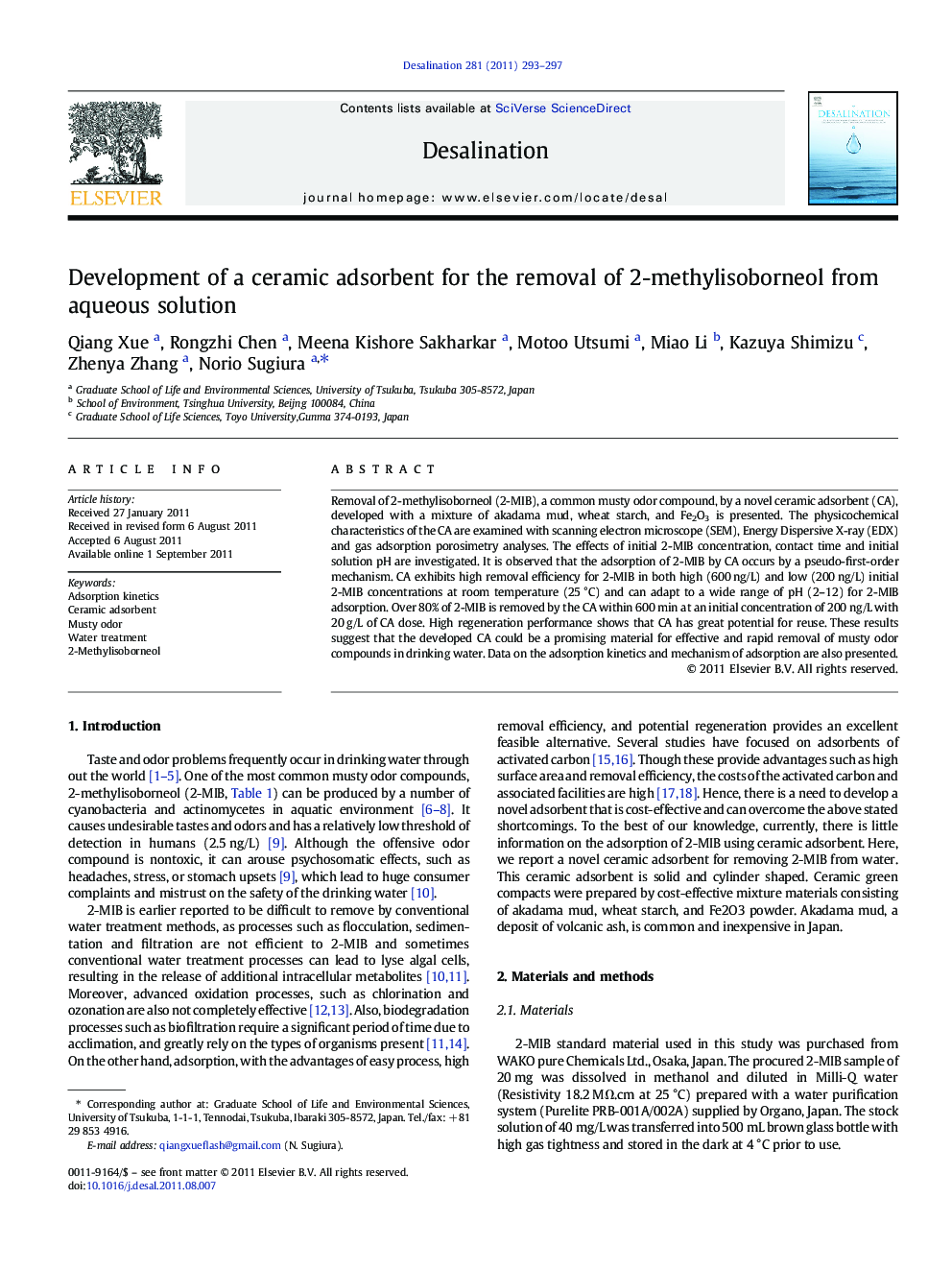| Article ID | Journal | Published Year | Pages | File Type |
|---|---|---|---|---|
| 624795 | Desalination | 2011 | 5 Pages |
Removal of 2-methylisoborneol (2-MIB), a common musty odor compound, by a novel ceramic adsorbent (CA), developed with a mixture of akadama mud, wheat starch, and Fe2O3 is presented. The physicochemical characteristics of the CA are examined with scanning electron microscope (SEM), Energy Dispersive X-ray (EDX) and gas adsorption porosimetry analyses. The effects of initial 2-MIB concentration, contact time and initial solution pH are investigated. It is observed that the adsorption of 2-MIB by CA occurs by a pseudo-first-order mechanism. CA exhibits high removal efficiency for 2-MIB in both high (600 ng/L) and low (200 ng/L) initial 2-MIB concentrations at room temperature (25 °C) and can adapt to a wide range of pH (2–12) for 2-MIB adsorption. Over 80% of 2-MIB is removed by the CA within 600 min at an initial concentration of 200 ng/L with 20 g/L of CA dose. High regeneration performance shows that CA has great potential for reuse. These results suggest that the developed CA could be a promising material for effective and rapid removal of musty odor compounds in drinking water. Data on the adsorption kinetics and mechanism of adsorption are also presented.
► A novel media, ceramic adsorbent (CA), has been developed for 2-MIB removal from aqueous solution. ► The adsorption process is observed to follow pseudo-first-order kinetic model. ► CA can adsorb 2-MIB efficiently in both high and low initial concentration solutions. ► The novel CA could be explored as a promising material for musty odor (such as 2-MIB) removal from water environment.
